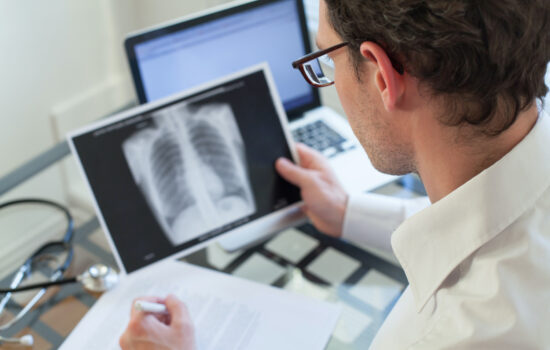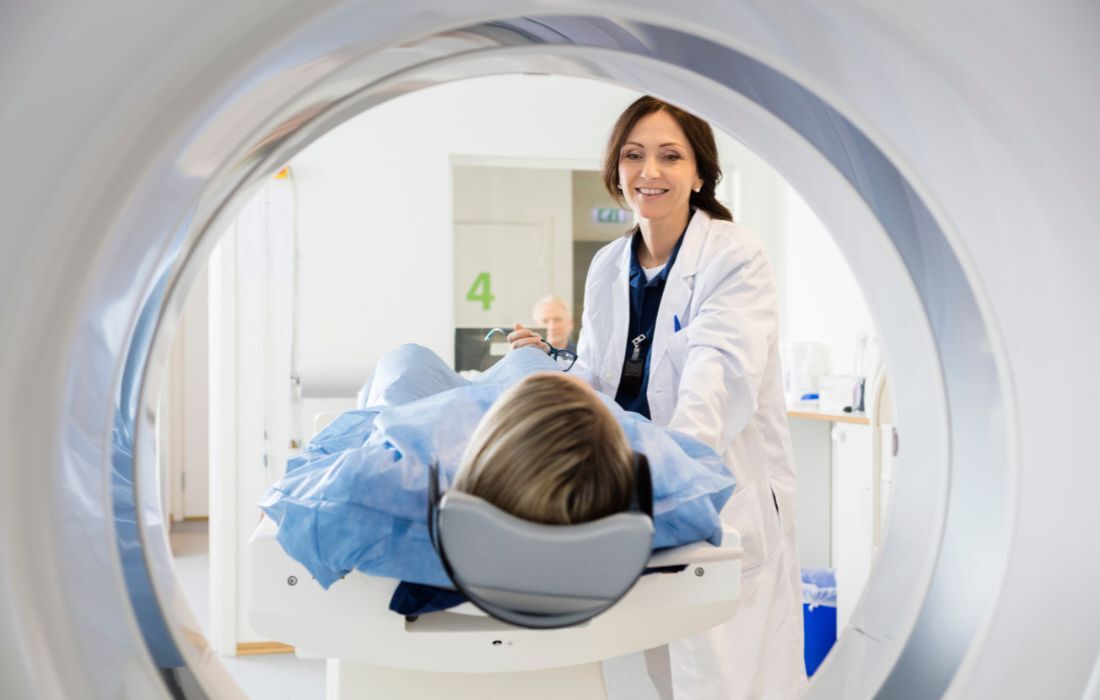September 21, 2020
What’s the Difference Between Lung Cancer Risk, Screening & Symptoms?

Knowing the risk factors for developing lung cancer is important so you can take action to try to reduce your risk. Some people also qualify for lung cancer screening, especially if there is lung cancer in your family.
Your risks, however, are different from signs and symptoms of lung cancer. Once cancer has started to develop, knowing what to look for can help you receive treatment sooner. The earlier you start cancer treatment, the better the results typically are. Let’s take a look at the differences between lung cancer risk factors and symptoms as well as look at who can qualify for lung cancer screening.
Lung Cancer Risk Factors
You can be more susceptible to lung cancer because of certain risk factors. And, while you can change some obvious risk factors, such as smoking and chemical exposure, there are certain ones, like genetics you can't change.
Here are the most common lung cancer risk factors:
1. Smoking
When it comes to lung cancer, smoking is by far the biggest risk factor. Between 80% and 90% of lung cancer deaths are related to smoking. Using other tobacco products such as cigars or pipes also increases the risk for lung cancer. This is because tobacco smoke is a toxic mix of more than 7,000 chemicals. Quitting smoking as soon as possible is your best option for reducing the risk of lung cancer.
2. Second-hand smoke
Secondhand-smoke is smoke from burning tobacco products, such as cigarettes, cigars, or pipes as well as the smoke that has been exhaled by a tobacco smoker. This smoke is very harmful and increases the risk of lung cancer for the non-smoker.
3. Chemical Exposure
Certain professions can expose you to harsh chemicals regularly, such as constant exposure to diesel exhaust, leading to an increased risk of lung cancer. Asbestos is a natural mineral you could be exposed to in the workplace or even in older buildings.
When asbestos is ingested or inhaled, tiny particles of mineral fibers may be trapped in the lungs. These trapped fibers can cause scarring and inflammation over decades. Prolonged asbestos exposure can cause cancers, most commonly mesothelioma, but it is also known to cause some other diseases like asbestosis.
4. Radon
Radon is a radioactive, naturally-occurring gas that's produced when thorium, uranium, and radium break down in the water, soil, and rock. You can be exposed to radon just by living somewhere that has a lot of it coming out of the ground
5. Diseases
Your risk of lung cancer can increase if you have certain diseases, such as:
- Pulmonary Fibrosis
- Chronic Obstructive Pulmonary Disease
- Tuberculosis
6. Family History
There's an increase in the risk of lung cancer if you have immediate family members who have had it, particularly at a young age. If your parents, children, or siblings have had lung cancer, you should talk to your doctor about the possibility of lung cancer screening.
Read more about lung cancer risk factors.
Lung Cancer Screening
While screening is not recommended for everyone, it recommends some individuals at high risk be screened. Screening can identify cancer sooner which results in better outcomes.
Talk to your doctor if you are in general good health and are age 50 to 80 years old
AND you meet the following:
You are currently a smoker or quit smoking in the past 15 years.
AND
You have at least a 20 pack-year smoking history. (This is the number of years you smoked multiplied by the number of packs of cigarettes per day. For example, someone who smoked 2 packs per day for 10 years [2 x 10 = 20] has 20 pack-years of smoking. A person who smoked 1 pack per day for 20 years [1 x 20 = 20] also has 20 pack-years of smoking.)

Lung Cancer Signs and Symptoms
If you’re a smoker you may already be on the lookout for lung cancer symptoms. However, up to 15% of cases of lung cancer are among non-smokers! Whether you smoke or not it’s important you keep an eye out for lung cancer symptoms.
Like with many cancers, lung cancer treatment is more successful the earlier you receive a diagnosis. See your physician if you're experiencing any of these symptoms of lung cancer:
- A cough that won't go away
- Hoarseness
- Chest pain that worsens by coughing, deep breathing or laughing
- Rust-colored or bloody sputum
- Loss of appetite and weight loss
- Recurrent infections like pneumonia or bronchitis
- New onset of shortness of breath or wheezing
Read more about lung cancer signs and symptoms.
When it comes to lung cancer, early detection and treatment are critical. If your doctor has given you a lung cancer diagnosis, additional testing may be needed so that a treatment plan by an oncologist can be created.
Lung Cancer Testing
There are a number of tests doctors use for detecting, diagnosing, and staging lung cancer. Some of these may be requested once you see an oncologist. The tests will vary between patients based on the type of cancer and if it's suspected it has spread outside their lungs. Certain factors that might influence the tests your doctor decides to use are:
- Your general health and age
- Your symptoms
- The location, type, and size of lung cancer suspected
- Earlier medical test results
Many individuals with lung cancer will have a biopsy of their lungs performed. A biopsy collects a small lung tissue sample that will be tested for cancerous cells in a lab. A variety of biopsy options could be used including:
1. FNA (fine-needle aspiration) Lung Biopsy: The doctor uses an ultrasound, CT scan or other imaging test to locate the abnormal fluid or tissue in your lung. They then make a small incision in your skin where they insert the biopsy needle into the abnormal fluid or tissue. They remove a sample with the needle and send it off to the lab for testing. A pathologist will look at the sample under a microscope to check for cancerous cells.
2. Bronchoscopy: This test uses a thin, tube-like tool called a bronchoscope, with a lens and light for viewing that's inserted through your mouth or nose into your trachea and lungs. The doctor looks inside your trachea and your lung's large airways for abnormal areas. The bronchoscope might also have a tool for removing tissue samples, which will be viewed under a microscope to check for cancer.
Your oncologist may use other tests to help them finalize their diagnosis.
Read more about lung cancer screening and diagnosis.
If you have received a lung cancer diagnosis, schedule an appointment with a lung cancer specialist at the Cancer Care Center of Brevard in Palm Bay, Melbourne, Merritt Island, and Rockledge, Florida.
Categories: Lung Cancer